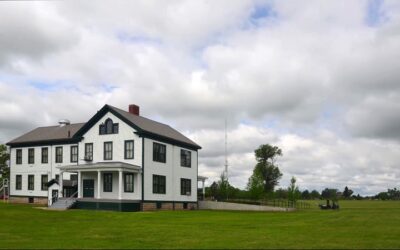
How do you find a historic site that’s been lost for nearly 200 years? Until 2003 no one knew if the 1819-20 winter quarters of the Stephen Long Expedition still existed, or if it had been washed away by the shifting Missouri River. NSHS archeologists re-discovered the site in 2003.
The story of Engineer Cantonment and the Long Expedition fills a forthcoming special issue of Nebraska History. The culmination of multiple excavations and years of historical research, the Spring 2018 issue features the collaboration of Nebraska State Archeologist Rob Bozell and a team of archeologists.
The Long Expedition was the first U.S. government team of professional scientists and artists sent to investigate the West. The party traveled from St. Louis on the Western Engineer, the first steamboat to ascend the Missouri River. They wintered at a site north of Omaha, not far from where Fort Atkinson would soon be built. The following spring, Long led a party west on foot to the Rocky Mountains. His description of Nebraska as a “Great Desert” set the region’s reputation for a generation.
Bozell and his co-authors investigate the expedition’s history and archeology, describing the site’s re-discovery (using an old painting!) and excavation in seven chapters. The authors have also produced a book-length technical report for their professional peers, but the Nebraska History issue is written for a historically-minded lay audience, and is illustrated with the expedition’s artwork and artifacts.
The Engineer Cantonment issue mails to NSHS members in late February. Single copies will be available for sale through the NSHS Landmark Stores.
Image above: Engineer Cantonment, along the Missouri River north of present-day Omaha, with the steamboat Western Engineer in the foreground. Watercolor by Titian Ramsay Peale, 1820. Peale’s portrayal of the land is so accurate that archeologists used the painting to help identify the location along the Missouri River. American Philosophical Society, Philadelphia
Image below: Buttons from the military members of the Long Expedition, recovered by archeologists at Engineer Cantonment site. Left to right, the insignias indicate: Artillery, 1813-1814; Light Artillery, 1814-1821; Rifle Regiment, 1814-1815; Rifle Regiment, 1815-1821. Since Captain John R. Bell is the only known member of the group to belong to the Light Artillery, the second button is apparently his. As the late NSHS archeologist Gayle Carlson pointed out, it’s rare in archeology to find an artifact associated with a known individual.





